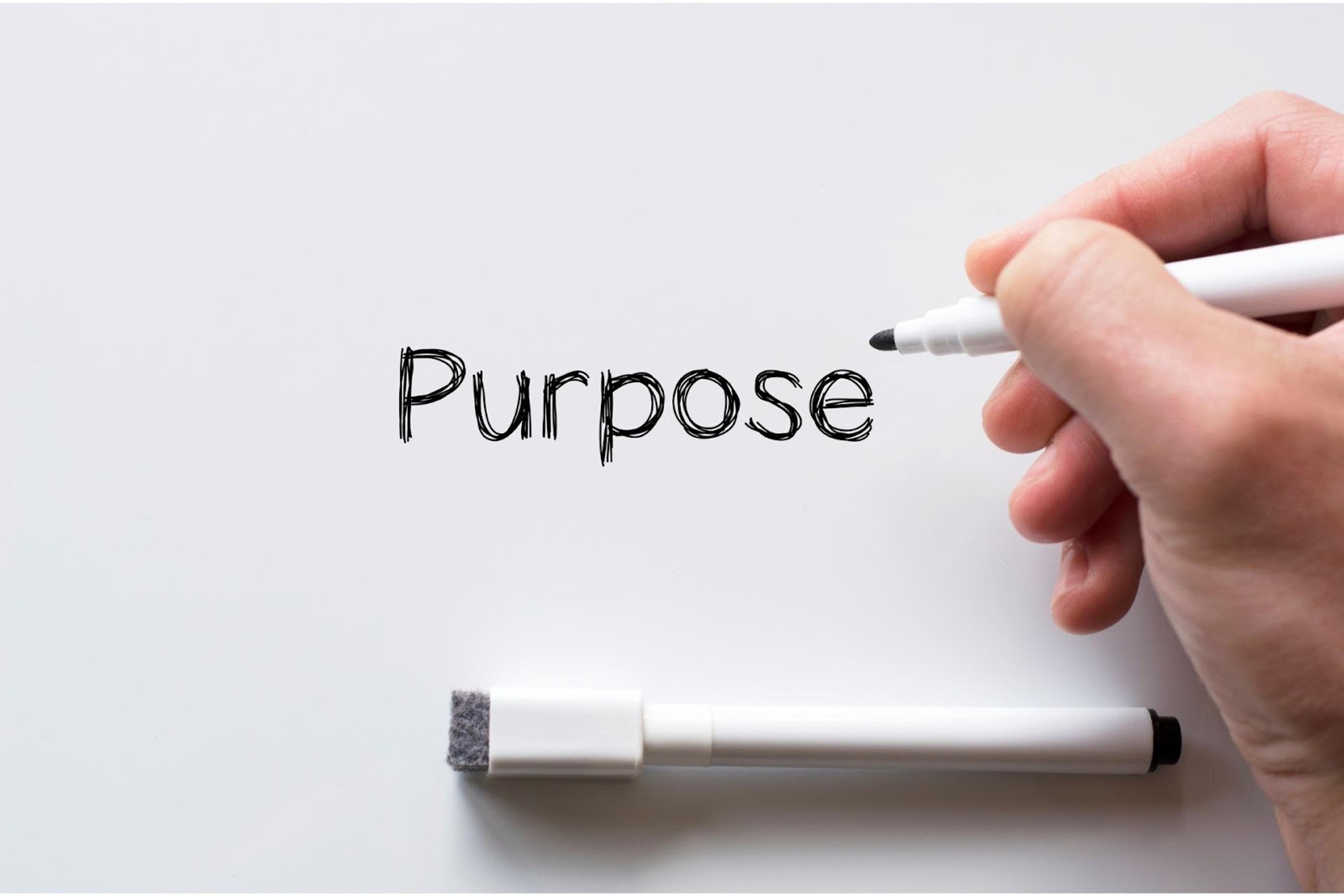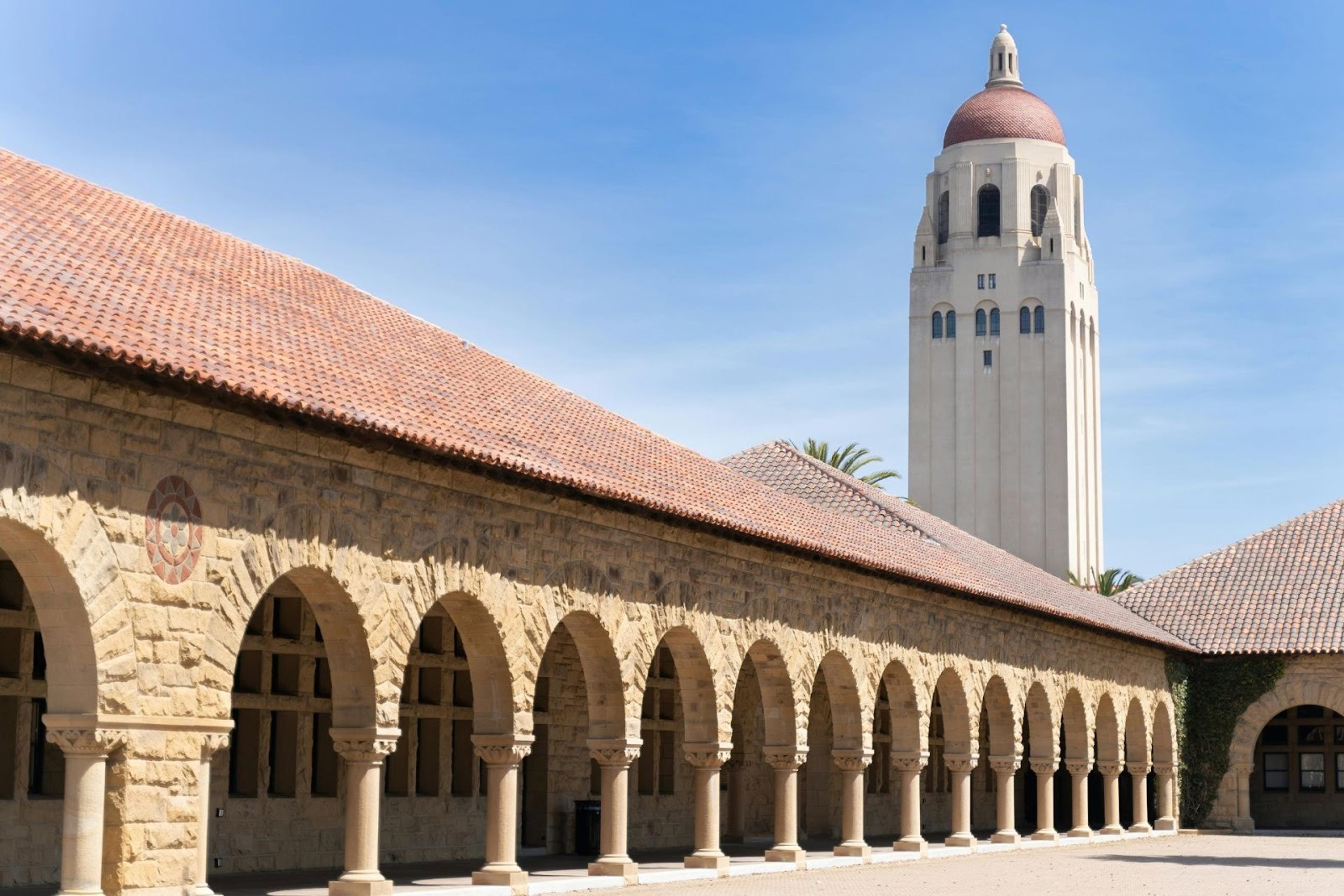How to Write a Personal Statement for Grad School (According to the Experts)
Learn how to write a clear, compelling statement of purpose for grad school with expert tips, real examples, and strategies that stand out to admissions.
Posted November 5, 2025

Join a free event
Learn from top coaches and industry experts in live, interactive sessions you can join for free.
Table of Contents
Writing a strong statement of purpose or personal statement is one of the most challenging and crucial aspects of applying to graduate school. It’s not just about telling your story; it’s about showing the admissions committee exactly why you’re a strong fit for their program. In this guide, we’ll walk you through how to turn your academic background, research experience, and career goals into a clear, compelling narrative.
You’ll get a simple structure to follow, real advice from recent applicants, and tips for what actually makes a difference, like referencing specific faculty members, connecting your research interests, and steering clear of the usual clichés. We’ll also share common mistakes to avoid, a final checklist, and a one-sentence version to keep in your back pocket as you revise.
Read: Should I Go to Grad School? Pros, Cons, and How to Decide
Personal Statement vs. Statement of Purpose for Grad School
These two terms get tossed around a lot, and while they sometimes overlap, they’re not the same. Most grad schools ask for one or the other, and knowing the difference will help you tailor your writing.
Statement of Purpose (SOP) = Your academic and professional “why”
Think of this as your academic statement. It’s focused, forward-looking, and directly tied to your research interests, academic background, and career goals. A strong SOP shows the admissions committee that you’re prepared for graduate study, that you understand what the program offers, and that you have a clear plan for how it fits into your future.
What to include:
- Your academic interests and how they developed
- Relevant research experience, internships, or coursework
- Why this particular program (mention specific faculty members, labs, or research opportunities)
- Your professional goals and how the degree will help you reach them
Personal Statement = The story behind your path
A personal statement is more narrative in tone. It still needs to connect to your academic and professional goals, but it allows more room to talk about the life experiences, values, or challenges that shaped your journey.
What to include:
- Personal or formative experiences that influenced your path
- Context around challenges in your academic record (if needed)
- Your motivation to pursue graduate school
- Reflection on how your background contributes to your perspective as a scholar or practitioner
Quick tip: If the prompt doesn’t clearly say “statement of purpose” or “personal statement,” read it closely. If it asks about your academic preparation, research, and future goals, it’s an SOP. If it asks about your background, identity, or journey, it’s more of a personal statement. Some schools ask for both, so don’t copy and paste.
Why your statement matters
When you apply to graduate school, you’ve already submitted transcripts, test scores (if required), letters of recommendation, CV, and sometimes GRE/GMAT scores. But the admissions committee needs a narrative that ties it all together. Your statement of purpose (and/or personal statement) bridges the gap between your academic record, past research experience, and your ambition for graduate study and beyond.
From applicant forums:
“An SOP is more academic … you shouldn’t start with a personal story.”
“Don’t put down ‘I want your job’.”
“What programs want: You are a good fit for the program … you will contribute.”
In short: your essay must demonstrate your readiness and purpose, not just tell a life story.
Read: The Power of ‘I’ Statements in Admissions Storytelling
Core Questions Admissions Committees Are Asking
Before writing, keep in mind what the admissions committee wants to understand from your document:
- Why are you interested in this graduate program? What specific faculty, research opportunities, or curriculum make it a good match for your research interests and professional goals?
- How have you already prepared (via academic background, research/internships, skills) for this level of graduate study?
- What are your ambitions: what will you do with a graduate degree in this field (i.e., your career goals or professional goals)?
- How will you add value (in your own words or via specific examples) to the program, the faculty, the cohort?
- Why now? Why this program? Why this area of research or field (e.g., public health, global health, etc.)?
Answering those five questions clearly and concisely will give you a structure that aligns with what admissions teams look for.
Structure: How to Build Your Essay
A great statement of purpose reads like a story with a purpose, one that moves logically from who you are, to what you’ve done, to where you’re going. Every paragraph should answer a version of the question: Why should this program invest in you?
Opening Paragraph
Your opening should immediately establish focus and intent. Skip the tired “ever since I was a child” opening and start with clarity and confidence: “I am applying to the [Program Name] in [Field] because…” In three to five sentences, explain what you want to study, what sparked that interest, and what you hope to accomplish. This isn’t the place for your full biography; it’s your professional introduction. Make sure the reader understands your academic interests, research goals, and career direction within the first few lines.
Body: Past and Present (What You Bring)
Paragraph A – Academic & research preparation
The body of your essay is where you build credibility. Think of it as the evidence section. Showing that you have the foundation, the focus, and the drive to succeed in graduate school. Start with your academic background, summarizing your undergraduate studies, relevant coursework, and major projects. Highlight moments that developed key skills or defined your research interests. Instead of listing achievements, show growth: “During my undergraduate thesis on [topic], I learned how to design experiments, analyze data, and communicate findings to a non-technical audience.”
Paragraph B – Fit with the program/faculty/opportunities
Next, connect your preparation to your fit for this graduate program. Explain how your research interests align with the specific faculty members, labs, or initiatives at the institution. Demonstrate that you’ve done your homework, mention professors whose work genuinely excites you, or research opportunities that complement your background. Admissions committees notice when applicants understand the nuances of their particular program. This is your chance to show that alignment clearly and authentically: “I am particularly drawn to Professor [Name]’s research on [topic], which dovetails with my interest in [area].”
Paragraph C – Professional goals/contribution (optional)
If relevant, include a short section on your professional goals. Discuss both the short-term direction you’ll take after earning your graduate degree and the broader impact you hope to make in your field or community. This is where you can show vision, how you’ll translate academic training into real-world impact. Whether that means advancing global health policy, conducting interdisciplinary research, or mentoring other applicants in the future, show that your ambitions are concrete and meaningful.
Conclusion
Your conclusion should leave the admissions committee confident that you’ll thrive in the program and contribute to it. Reaffirm your enthusiasm for the graduate study ahead, and summarize why your experiences, skills, and academic record make you a strong match. End on a forward-looking note, hint at a potential thesis project, a research direction, or the kind of scholar or professional you aspire to become. Keep it concise and confident; one tight paragraph is enough. Above all, finish with purpose, not repetition.
Real-World Insights and Tactical Takeaways
The best advice often comes from people who’ve recently been in your shoes or on the other side of the admissions table. We’ve pulled key insights from Reddit, Quora, and other real-world threads, then translated them into expert-level guidance to help you avoid common pitfalls and stand out.
Avoid Clichés and Over-Personalization
As one Redditor put it bluntly:
“Don’t say things like ‘my whole life I’ve known I wanted to…’ The stories are all the same and frightfully boring.”
Admissions committees see hundreds of essays that start with vague childhood dreams or sweeping personal declarations. Instead, lead with specific, evaluative experiences that show intellectual curiosity, initiative, and growth.
Try something like:
“In a supervised lab working on [topic], I discovered that…”
“While interning at [organization], I developed communication skills in [context] that helped me…”
These kinds of moments are concrete, memorable, and more persuasive than generalizations.
Be Intentional About What You Share
You can include personal elements, but only if they serve a clear purpose. As one applicant put it:
“You can be personal in an SOP, but you need to have a purpose for it.”
If you bring up life experiences, make sure they directly support your academic goals, research interests, or career direction. Don’t drift into a long “life story” unless it’s tightly connected to what you want to study and why.
Tailor Your Essay to the Program
One of the biggest red flags for an admissions reader? Generic essays.
“Mention why you are applying to the program …”
Schools want to see that you understand what makes their program unique, whether that’s a faculty member’s research, a specialized lab, or a particular methodological focus. Referencing those specifics not only shows genuine interest but also signals alignment between your goals and what the program offers.
Double-Check Your Focus
There’s often confusion between a statement of purpose and a personal statement. A Reddit user offered a helpful distinction:
“An SOP is what you want to achieve in it, and the personal statement is your life.”
If the prompt asks for a statement of purpose, focus on your academic and professional future. Your research, your fit with the program, your goals. If it’s a personal statement, you can include more background and narrative, but always tie it back to what you want to do and why you’re ready to pursue graduate study now.
Preview Your Reader’s Mindset
Your audience is an admissions committee member, often a faculty member, who is reading dozens (if not hundreds) of applications in a short period. They are scanning for signs of clarity, preparedness, originality, and fit.
Your job? Make their decision easier. Write clearly, avoid filler, and keep your narrative focused on answering the real question: Why you, why this program, and why now?
Read: A Great Admissions Coach Can Be Life-Changing – Here’s How
Sample SOP Outline (With Keyword Guidance)
Use this as a template, and be sure to weave in the keywords (naturally) such as: “statement of purpose”, “graduate school”, “graduate program”, “academic background”, “research interests”, etc.
1. Opening Paragraph (Your Academic “Why”)
Start with a clear, forward-looking statement of intent. This is where you establish what you want to study and why, rooted in your academic interests and goals, not your childhood memories or life story. Think of this as your professional headline. You’re not trying to hook the reader emotionally; you’re establishing clarity, competence, and purpose.
Expert framing:
“I am applying to the [Graduate Program] in [Field] to pursue graduate study focused on [core research interests], building on my academic background in [Undergrad Major] and my experience in [relevant experience].”
Your tone should be direct, confident, and informed. In just 3–5 sentences, signal to the admissions committee that you know exactly why you’re applying to graduate school, what you’re ready to explore, and how it connects to your longer-term professional goals.
2. Academic Background and Preparation (Your Foundation)
This paragraph shows your readiness for graduate-level work. Go beyond a résumé-style list, curate key parts of your academic record and experiences that directly support your proposed study.
Highlight:
- Foundational coursework or undergraduate studies that sparked or deepened your interest
- Significant academic experience, internship experience, or research involvement
- Major papers, capstone projects, or lab work that developed critical skills or clarified your focus
Expert move: Use cause-and-effect language to show how your experiences shaped your research interests:
“Through my thesis project on [topic], I became increasingly interested in [field], particularly as it intersects with [specific issue].”
You’re building the case that your background isn’t just impressive, it’s relevant.
3. Research Interests and Program Fit (Why This Program)
Now that you've laid the groundwork, connect your goals to the particular program you’re applying to. This is where many applicants go vague; you must be specific.
Clearly articulate your current research interests and how they align with:
- The program’s faculty (name 1–2 specific faculty members and reference their work meaningfully)
- Research centers, labs, methodologies, or interdisciplinary focuses unique to the program
- Opportunities you plan to pursue: assistantships, fieldwork, thesis project, etc.
Expert framing:
“I am especially drawn to Professor [Name]’s work on [area], which aligns with my particular interest in [specific subfield]. I hope to contribute to ongoing research on [issue] while developing my own focus on [refined angle].”
This paragraph should scream fit. It’s about showing the admissions committee that you belong there.
4. Career Goals and Future Contribution (What You’ll Do With the Degree)
Zoom out from your academic goals and explain your larger professional goals. Where is this degree taking you? What impact do you want to make?
Explain how this graduate degree will help you:
- Advance your career in a specific direction (academia, industry, policy, global health, etc.)
- Develop leadership in a field or contribute to underserved populations or communities
- Combine your academic experience with real-world application
Expert insight: Programs are investing in potential. Show them how you’ll take what they give you and multiply its value.
“With this degree, I intend to lead research initiatives in public health policy focused on reducing maternal mortality in low-resource settings. The training in both quantitative methods and health equity frameworks at [Program] will directly support that mission.”
This is where you clarify how you’ll apply what you learn, not just what you hope to study.
5. Conclusion (Reaffirmation and Forward Vision)
Your final paragraph should synthesize, not summarize. Reaffirm your motivation, your fit with the program, and your readiness for graduate study. Then, leave the reader with a confident, forward-looking note about the contribution you hope to make.
Expert framing:
“Through this statement of purpose, I hope to convey my commitment to [field], my readiness for the academic challenges of [Program], and my enthusiasm for contributing to ongoing research on [specific issue]. I look forward to the opportunity to collaborate with faculty such as Professor [Name] and to pursue graduate study that prepares me to make a meaningful, long-term impact in [career area].”
Keep it concise: one strong paragraph that ends with momentum. No need to restate every section; leave your reader with clarity and conviction.
To craft a clear, compelling grad school essay that highlights your strengths and aligns with what admissions committees actually want, download Personal Statements: A Guide to Getting Started
Graduate School Personal Statement & SOP Examples
A great personal statement or statement of purpose does more than summarize your achievements; it tells a focused, compelling story of academic growth, research direction, and program fit. Below, we compare strong and weak examples of both introduction and conclusion paragraphs to highlight exactly what works and what doesn't.
Introduction Paragraphs: Strong vs. Weak
Strong Example:
“The first time I stepped into a neuroscience lab, I was mesmerized not by the equipment, but by the questions the researchers were asking. Why do memory disorders progress differently in individuals with the same diagnosis? How do language and cognition intersect in neurodegenerative diseases? That experience sparked a focused curiosity that shaped the rest of my undergraduate career. Through coursework in cognitive psychology, research on aphasia, and a senior thesis on memory recall in aging populations, I’ve developed the academic foundation and research direction I hope to continue exploring in a PhD in cognitive neuroscience.”
This introduction works because it opens with a thoughtful, relevant hook and immediately grounds the reader in the applicant’s long-term academic motivation. It traces a clear line from early exposure to real action, academic focus, and a defined research goal. The tone is professional, the story is cohesive.
Weak Example:
“Well, I’ve always found the brain interesting, and I think it would be amazing to learn more about it in grad school. I’ve done some research and taken a few classes, and I think I’d be a good fit for your program. Also, I really like how flexible your schedule seems, and I’ve heard the campus is beautiful. I hope this program will help me figure out my next steps.”
This paragraph fails on multiple levels. The tone is overly casual and lacks professionalism. The focus is scattered, with vague statements of ability and motivations based on personal lifestyle. There’s no real evidence of academic preparedness or clarity of research interests, both critical in graduate admissions.
Expert Tip: Start your introduction with intention. Open with a hook connected to your field or research focus. Establish your academic background and goals early, and keep the tone confident but professional. Avoid generalizations, casual phrasing, and lifestyle-driven reasons for applying.
Conclusion Paragraphs: Strong vs. Weak
Strong Example:
“As a first-generation college student and an English language learner, my academic path has been shaped by a persistent interest in how language, memory, and aging intersect, and a desire to explore those connections through rigorous, community-informed research. I’m particularly excited about the opportunity to work with Dr. Marquez, whose work on bilingualism and memory loss directly informs the direction I hope to take. With your program’s emphasis on interdisciplinary training and collaborative mentorship, I’m confident I can both contribute meaningfully and grow as a scholar committed to public impact.”
This conclusion reinforces the applicant’s qualifications, character, and research focus. It mentions specific faculty, signals alignment with the program’s mission, and closes on a collaborative, forward-looking note. It adds weight to the application without repeating earlier content.
Weak Example:
“Thanks for reading my application! I’m really hoping to hear back. I know graduate school will be a challenge, but I’m ready for it and excited to meet new people. I think this program will be a great place to grow.”
This conclusion weakens the entire essay. It dismisses key aspects of graduate training and lacks any real academic closure. Ending with “Thanks for reading!” sounds more like a casual blog post than a professional application.
Expert Tip: Use your conclusion to reinforce your fit, express sincere enthusiasm, and show a clear path forward. Mention specific faculty or program features. Avoid jokes, informal language, or vague self-praise.
Common Mistakes & How to Avoid Them
| Mistake | Why it hurts | How to fix |
|---|---|---|
| “I’ve always loved this field since childhood” (without substance) | Feels cliché and unoriginal. | If you use this, follow quickly with a research‑related turning point and concrete examples. |
| Too much biography/life story (“life story”) | Diverts focus from why you’re ready for graduate study. | Keep personal context brief. Emphasize skills, results, and fit. |
| Generic references to the program | The committee sees it. They want specificity. | Name specific faculty, labs, courses, or initiatives. |
| Lack of clarity about future goals | Admissions want to know why you want the graduate degree and what you'll do with it. | State short‑term and long‑term goals clearly. |
| Writing like a résumé or bullet list | The essay should narrate growth, not just list achievements. | Use examples to illustrate; reflect on what you learned or why it matters. |
Read: The Top 10 Mistakes People Make on their Graduate School Applications
How to Use Keywords Naturally and Strategically
Strong statements speak the language of admissions. Throughout this article, we’ve shown how to naturally integrate key terms like statement of purpose, graduate school, academic background, research interests, career goals, and graduate program. These aren’t just SEO keywords; they’re the same phrases admissions committees use when evaluating your fit and readiness.
In your own writing, weave these terms in where they naturally apply. Don’t force them, but use them with purpose, especially when connecting your academic experience, professional goals, and alignment with the specific program.
Here’s an example of how that looks in a real sentence:
“Through my undergraduate thesis on global health, I strengthened my academic background and developed research interests in health equity, particularly among underserved populations, which align directly with the research opportunities available in your graduate program. In this statement of purpose, I aim to demonstrate to the admissions committee how my own interests, training, and long-term goals make me a strong fit for graduate study at your institution.”
This kind of language accomplishes multiple things at once: it grounds your experience in specifics, reinforces your fit with the program, and clearly signals your academic and professional intent, all while integrating high-value terms organically.
In short: your statement should sound like a future grad student who’s ready to contribute, not someone trying to hit a word count or keyword quota. Focus on clarity, alignment, and authentic purpose, and the language will follow.
Final Checklist
Before submitting your statement, make sure you’ve checked:
- Does the document clearly state why you are applying to this graduate program?
- Does it highlight your academic strengths, research experience, and relevant skills?
- Does it reference specific faculty, labs, or aspects of the program to show fit?
- Does it articulate your career goals and how the graduate degree will enable them?
- Is every paragraph purposeful and contributes to the case that you are a strong candidate?
- Have you avoided clichés and generic statements?
- Have you proofread for grammar, clarity, and flow (ideally with external feedback)?
- Is the essay tailored to the word limit and prompt of the application?
- Does it speak with your own voice, not just generic “I love X” statements?
Bringing It All Together: From Draft to Acceptance
Writing a standout personal statement or statement of purpose isn’t just about sounding impressive. It’s about clarity, strategy, and alignment. Admissions committees aren’t looking for perfection; they’re looking for purpose, preparation, and potential. If you can articulate why you’re pursuing this path, how your experiences have shaped your research interests, and why this specific program is the right next step, you’ll already be ahead of most applicants.
If you want personalized, one-on-one feedback to make sure your essay is hitting the mark, connect with a master’s program admissions coach. Also, join our free events for more insights!
See: The 10 Best Graduate & PhD Admissions Consultants: What They Do and When to Hire One
Read next:
- Beyond the Checklist: How to Showcase Your Unique Skills and Experiences in Your Grad School Applications
- What Extracurriculars are Graduate Programs Looking For?
- Why ChatGPT Can’t Write Your Personal Statement
- A Word of Caution on Application Essays and AI
- What GPA Do You Need to Get Into Graduate School?
- What Does "Holistic Review" Mean in Graduate School Admissions?
- Graduate Admissions: Myths Busted!
- Stanford MSCS: Program Overview, Acceptance Rate, & How to Get In
FAQs
What’s the difference between a personal statement and a statement of purpose?
- A personal statement is more narrative and often includes your background and motivations. A statement of purpose is more academic and focused on your research interests, preparation, and career goals. Some programs ask for both, others use the terms interchangeably.
Read: Statement of Purpose vs. Personal Statement: Differences, Tips, & What to Know
How do I know what to include and what to leave out?
- Focus on what directly supports your readiness for grad school: your academic background, research experience, professional goals, and program fit. Leave out unrelated personal anecdotes, vague self-praise, or lifestyle preferences.
Can you review what I’ve written and tell me what to fix?
- Absolutely. A Leland coach can review your draft and give you specific, actionable feedback on structure, clarity, tone, and alignment with what admissions committees are looking for.
How personal is too personal for a grad school essay?
- It depends on the prompt. If you’re writing a statement of purpose, keep it professional and academically focused. If it’s a personal statement, you can share personal context, but always connect it back to your academic and career goals.
Browse hundreds of expert coaches
Leland coaches have helped thousands of people achieve their goals. A dedicated mentor can make all the difference.



















